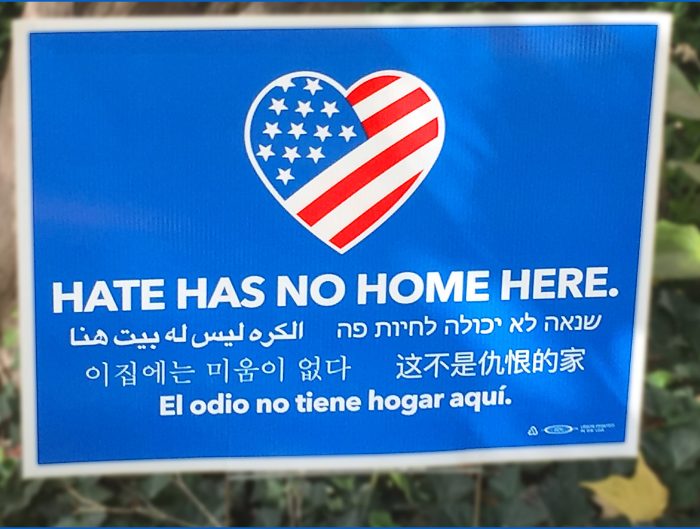Of all the literal and figurative poisons floating around our world–the carbon emissions heating up the planet, mercury, microplastics; bigotry and hate; war and authoritarianism–the most dangerous is despair. For as soon as we succumb to hopelessness, we lose sight of all tools at our disposal to get rid of, or at least mitigate the impact of, all this poison.
You can think of the power of despair in this way: nothing paves the way for evil more readily than the lack of organized resistance to it. And evildoers know this; it’s why people like Steve Bannon talk about “flooding the zone with shit“–they want to overwhelm us to the point of inaction. Fortunately, there is a well-established and readily available antidote to despair: action.
This week’s events have once again validated the efficacy of this antidote. As you may have heard, apparently out of nowhere, Senator Manchin announced a deal for a spending bill that includes $369 billion to address the climate crisis–the largest-ever American clean-energy investment. Were the bill to pass–and that’s uncertain; all 50 Senate Democrats must vote in favor, and Senator Sinema appears to want to play spoilsport, so please call your Members of Congress (action!)–it would put America back on path to meet its climate goals, and help rally the world to do the same.
Now, while I wrote apparently out of nowhere, nothing could be further from the truth. Manchin didn’t just change his mind, and this moment didn’t just materialize magically. We are on the cusp of historic climate legislation because, in 2018, Democrats took back the House, and in 2020 we won the White House, kept the House, and gained control of the Senate. We’re here because the Sunrise Movement introduced the idea of the Green New Deal and mobilized young people to advocate for it. We’re here because in 1988, scientist James Hansen warned the Senate about global warming. We’re because of Al Gore’s An Inconvenient Truth, and Greta Thunberg’s Fridays for the Future Movement; because of the scientists and engineers entrepreneurs who have made renewable energy the cheapest form of energy in history; because of the millions of homeowners who have installed rooftop solar panels; because of activists and advocates, policy wonks and community organizers, donors and impact investors, nonprofit employees; and scores of people taking actions big and small: planting trees, blockading coal plants, creating ever-more-accurate climate models.
Good never happens by accident, or in a vacuum. Before the Montgomery Bus Boycott that made Dr. Martin Luther King, Jr. and Rosa Parks national figures, civil rights activists had been organizing for years–laying the groundwork for a successful campaign. Long before the Supreme Court recognized the right to same-sex marriage, gay-rights activists were filing lawsuits in state courts and building political power.
Whether it’s a community park, after-school program, affordable-housing complex, or any other imaginable community good, rest assured that it came to fruition because a group of people organized and fought and strategized. I find this so liberating. No matter the difficulty of the moment, we can always do something: write, text, or call potential voters; run for office; donate to pro-democracy politicians and high-quality nonprofits; plant a tree; install solar panels; write a letter to the editor (like I did last week, publishing, in The Boston Globe, a short piece calling for Congress to not give up on a climate bill!); talk to friends and family about the issues we care about; work or volunteer for nonprofits, think tanks, government agencies, or social enterprises; educate ourselves about the issues by reading, listening to podcasts, and watching documentaries.
In short, the bleaker things seem, the more important it becomes that, every day, we educate, organize, strategize, and act. It may take decades for change to come–it may never come–but, as Vaclav Havel would often say, “Hope is definitely not the same thing as optimism. It is not the conviction that something will turn out well, but the certainty that something makes sense, regardless of how it turns out.” There is an art and science to change. A good way to start to learn it is to read Gene Sharp’s How Nonviolent Struggle Works (free PDF), Saul Alinsky’s Rules for Radicals (free PDF), Erica Chenoweth’s Why Civil Resistance Works, or Indivisible’s Practical Guide for Fixing our Democracy; watch a documentary like A Force More Powerful: A Century of Nonviolent Conflict; or access the nonviolence toolkits put out by Beautiful Trouble and the Center for Applied Nonviolence, to provide just a few examples.
Imagine hiking a trail known to be home to poisonous snakes. Carrying an antivenom in your pocket may not erase the fear, but it can reduce the terror. Our lives are strewn with danger, with injustice, with fear and sadness. Fortunately, the antidote is always available to us–in our hearts, minds, hands, muscles, and wallets.




Leave A Reply